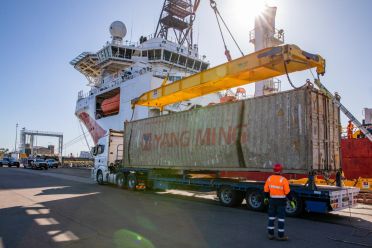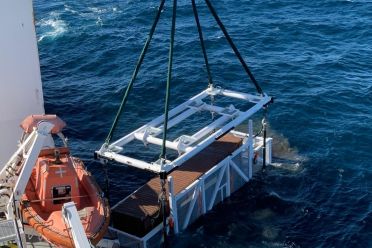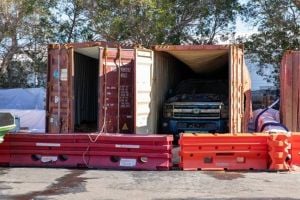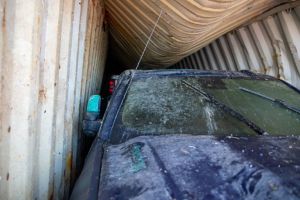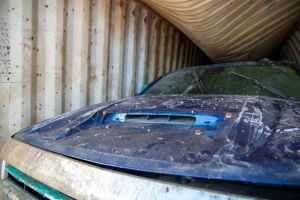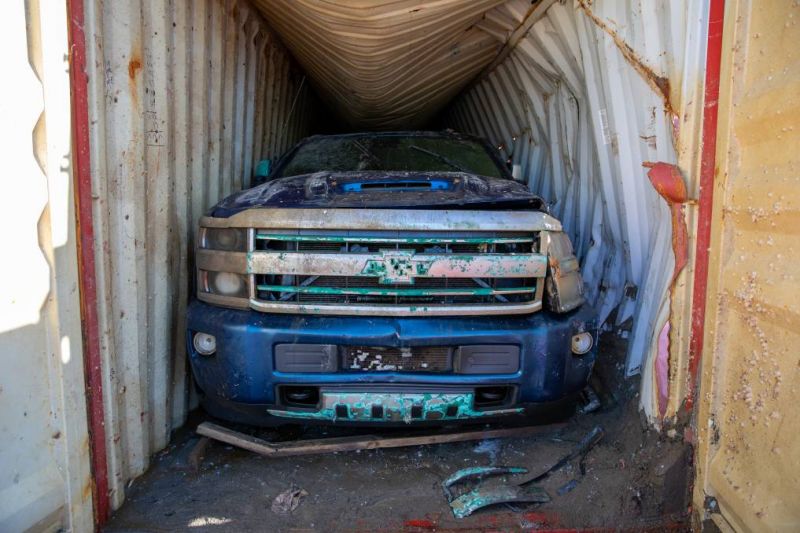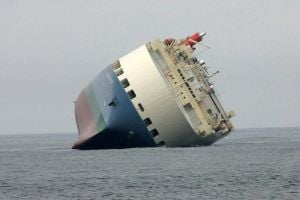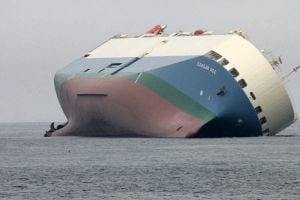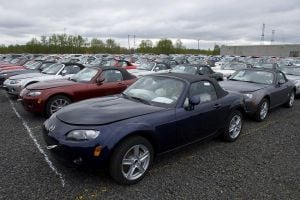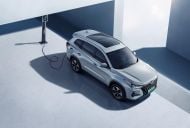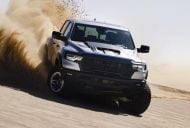If you’ve ever endured a rough night on the Spirit of Tasmania and felt uneasy as the boat rocks around, spare a thought for container ships – especially container ships carrying Chevrolet Silverados due for right-hand drive conversion.
Every now and then, container ships will catch a massive swell and lose containers overboard.
That’s exactly what happened to the YM Efficiency on June 1, 2018. The ship lost 81 containers in Australian waters off the Newcastle – Port Stephens coast, 18 of which have been removed so far.
Oddly, 14 are still hidden on the seabed. Who’d have thought they’d be so hard to find?
Two containers piqued our interest. They held a pair of Chevrolet Silverado 2500 pickup trucks headed to right-hand drive conversion specialists Performax in Queensland.
Any hopes of parting out the Silverados are dashed when you check out the images. The containers smashed into the sea bed, which sits around 120m below sea level, causing significant damage to the containers and the vehicles within them.
On top of that, they were only retrieved this month. They’ve been on the ocean floor for more than 18 months, soaking up the salt water.
When overboard containers are noticed, the ship’s operator is forced to report the issue and begin the process of recovering them.
According to the Australian Marine Safety Authority (AMSA), leaving the containers “in-situ poses an unacceptable environmental risk for the local community and future generations. It also presents a safety risk to local fishers”.
Imagine heading out in search of flathead and pulling out a dual-cab ute.
How does the recovery process work? AMSA contracted sea recovery specialists Ardent Oceania in December to recover 60 of the containers. A remotely operated underwater vehicle (ROUV) is deployed to locate the containers and assist attaching cranes to the containers.
The crane straps will include a metal basket that sits around the containers and is used to secure and then remove them from the water.
Once containers are pulled from the water, they’re taken ashore so their contents can be secured and processed by the Environmental Protection Agency (EPA).
Where containers can’t be secured, the ROUV is used to locate and then load debris and container parts into a metal basket.
Normally the ship’s operator foots the recovery and pollution restitution bill, but in this case the owners of YM Efficiency have refused to pick up the bill – AMSA has stepped in to make the recovery happen and chase costs down the track.
Shipping accidents with car carriers aren’t common, but they do happen. One of the biggest accidents in history was the MV Cougar Ace, which ran into trouble in 2006.
A total of 4800 cars were on board – 4700 Mazdas and 100 Isuzus – when the ship listed 60 degrees to its port side during a failed ballast transfer. The entire fleet of Mazdas were written off – about $184 million worth of stock.
All images courtesy of AMSA unless otherwise specified.





